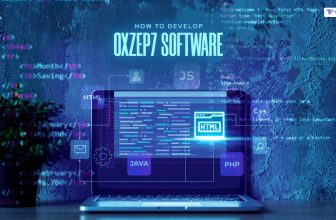
A software code audit is a critical process that ensures the integrity, security, and quality of a software application. It involves examining the codebase to identify potential vulnerabilities, bugs, and inefficiencies. A comprehensive software code audit should cover various essential elements to provide a thorough analysis. In this article, we will explore the 13 must-have elements that should be included in a comprehensive software code audit.
Source Code Analysis
The first and foremost element of a software code audit is source code analysis. This involves examining the codebase to understand its structure, organization, and overall quality. The auditor reviews the code to identify any potential coding errors, security vulnerabilities, or performance bottlenecks. This analysis helps in gaining a comprehensive understanding of the software application.
Security Vulnerability Assessment

Security is a critical aspect of any software application. A comprehensive code audit should include a thorough security vulnerability assessment. This involves identifying and analyzing potential security weaknesses or vulnerabilities in the code. The auditor looks for common security issues such as SQL injection, cross-site scripting, and authentication flaws. By addressing these vulnerabilities, the overall security of the software application can be significantly enhanced.
Performance Optimization
Efficient performance is essential for any software application. A code audit should include a performance optimization element. This involves identifying areas of the code that might be causing performance bottlenecks or inefficiencies. The auditor examines the code to ensure that it follows best practices for performance optimization, such as minimizing database queries, optimizing algorithms, and improving caching mechanisms. By optimizing the performance of the code, the overall user experience can be greatly improved.
Compliance With Coding Standards
Maintaining coding standards is crucial for code readability, maintainability, and collaboration. A comprehensive code audit should assess the codebase for compliance with coding standards. The auditor reviews the code to ensure that it adheres to established coding conventions, such as consistent indentation, naming conventions, and documentation practices. By enforcing coding standards, the codebase becomes more robust and easier to maintain.
Documentation Review
Documentation plays a vital role in understanding the codebase and its functionality. A thorough code audit should include a review of the documentation associated with the software application. The auditor examines the documentation to ensure its completeness, accuracy, and relevance. Additionally, they assess whether the documentation provides sufficient information for developers and users to understand and work with the software application effectively.
Version Control Management
Version control is crucial for managing the codebase effectively and ensuring collaboration among developers. A code audit should include an assessment of the version control system being used. The auditor reviews how the codebase is organized, branches are managed, and commits are handled. They also evaluate whether best practices, such as proper commit messages and code review processes, are followed. Effective version control management ensures a streamlined development process and enhances code quality.
Error Handling And Exception Management
Robust error handling and exception management are essential for any software application. During a code audit, the auditor examines how errors and exceptions are handled within the codebase. They assess whether appropriate error messages are displayed to users, exceptions are caught and logged correctly, and potential error scenarios are handled gracefully. By addressing error handling and exception management, the overall stability and reliability of the software application can be improved.
Data Integrity And Validation
Data integrity and validation are crucial components of a secure and reliable software application. A comprehensive code audit should include an assessment of how the codebase handles data integrity and validation. The auditor reviews the code to ensure that user input is properly validated, data is securely stored, and appropriate measures are taken to prevent data corruption or manipulation. By addressing data integrity and validation, the overall data security and reliability of the software application can be enhanced.
Scalability And Performance Testing
Scalability is an important consideration for software applications, especially those expected to handle increasing workloads or user demands. A comprehensive code audit should include an evaluation of the codebase’s scalability and performance. The auditor assesses whether the code is designed to handle large amounts of data or concurrent users efficiently. They also examine if performance testing has been conducted to identify any bottlenecks or limitations. By addressing scalability and performance issues, the software application can better accommodate future growth and deliver optimal performance.
Third-Party Library And Dependency Analysis
Many software applications rely on third-party libraries and dependencies to enhance functionality and save development time. However, these external components can introduce vulnerabilities or compatibility issues. A code audit should include a thorough analysis of the third-party libraries and dependencies used in the codebase. The auditor reviews the versions, licensing, and security history of these components. They also assess if any known vulnerabilities or outdated versions exist. By ensuring the integrity and security of third-party components, the overall stability and reliability of the software application can be maintained.
Code Maintainability And Modularity
Maintaining and updating software applications can be challenging if the codebase is poorly structured or lacks modularity. A comprehensive code audit should assess the codebase’s maintainability and modularity. The auditor examines if the code follows modular design principles, such as separation of concerns and code reusability. They also evaluate if the code is properly commented on and documented to aid future maintenance and updates. By addressing code maintainability and modularity, developers can work more efficiently and effectively collaborate on the software application.
Testing Coverage And Automation
Thorough testing is crucial to identify bugs, validate functionality, and ensure software quality. A code audit should evaluate the testing coverage and automation practices implemented in the codebase. The auditor reviews if comprehensive unit tests, integration tests, and acceptance tests are in place. They also assess if test automation frameworks or tools are utilized to streamline the testing process. By improving testing coverage and automation, the software application’s quality and stability can be significantly enhanced.
Code Review And Collaboration Processes
Effective code review and collaboration processes are essential for maintaining code quality and fostering teamwork. During a code audit, the auditor assesses how code review and collaboration are conducted within the development team. They evaluate if code reviews are performed regularly if constructive feedback is provided, and if best practices are followed. They also look for evidence of collaboration tools or platforms that facilitate efficient communication and knowledge sharing. By improving code review and collaboration processes, developers can learn from each other and deliver higher-quality code.
Conclusion
A comprehensive software code audit requires attention to various essential elements. By including the 13 must-have elements mentioned above, developers and organizations can ensure the integrity, security, and quality of their software applications. From source code analysis to documentation review, security vulnerability assessment to performance optimization, each element contributes to a thorough analysis of the codebase. By addressing these elements, developers can identify and rectify any issues, enhancing the overall reliability, scalability, and maintainability of the software application.
Top of Form
Read Also:






